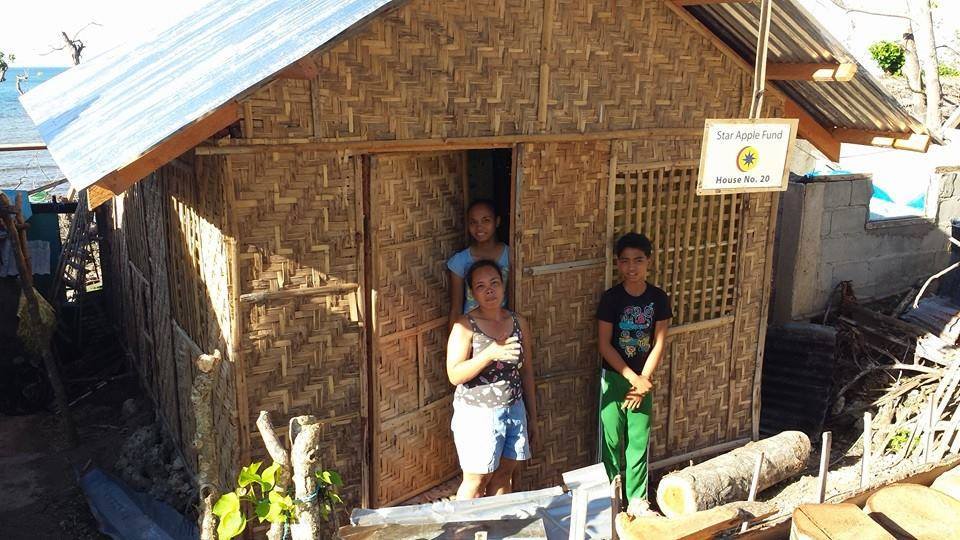The Government Service Insurance System (GSIS) stands to earn more than Php569 million following the unprecedented sale of three of its prime Metro Manila properties last December.
The Philcomcen building in Ortigas with a book value of only Php234 million was sold to the Filinvest Land Inc. with a bid of Php771.5 million. Cul Transit in Quezon City, with a book value of only Php50 million, was sold to Global 360 Development Corporation who bidded Php78 million for the 2,076 square meter property. And, Polymedic Apartment 2 in Mandaluyong with a book value of Php7.8 million was sold to BMI Realty at Php12.1 million.
“The results are overwhelming. We were able to sell them at rates way beyond our asking price through a transparent bidding process,” GSIS President and General Manager Robert G. Vergara said.
Along with Philcomcen, Cul Transit and Polymedic 2, other GSIS acquired assets that were put on the sale block in November 2013, included Polymedic 1 as well as LA’O and the former Jai Alai in Manila.
Nine bidders, including real estate developers submitted offers for the six properties.
Vergara said it was the perfect time to dispose the assets given the real estate property boom in the country.
“Our efforts to level the playing field for buyers of our properties have paid off,” President and General Manager Robert Vergara said as he assessed the recently concluded public auction.
“This milestone bodes well for auctions that we will be holding in the future,” Vergara said, adding “this will positively impact on the financial standing of the institution.”
Based on unaudited figures, the total assets of GSIS for the first 11 months of the year, stood at Php784.1 billion, up by 8% from the Php726 billion posted in 2012.
Overpriced, substandard bunkhouses bode bigger disaster for Yolanda survivors, solon says
“This is victimization twice, thrice and several times over. The
building of substandard and overpriced bunkhouses for the survivors of typhoon Yolanda is not only scandalous, it is cruel and inexcusable.”
Thus said Gabriela Women’s Party Representative Luzviminda Ilagan as temporary shelters for typhoon survivors in Eastern Visayas were found to be subpar on top of allegations overpricing. “It showcases this goverment’s undignified and unjust treatment of typhoon survivors. Ano ba’ng palagay nila sa mga nasalanta ng bagyo? Mga daga?”
“From its failure to rescue survivors and retrieve casualties to the delivery and distribution of relief and aid, and now with anomalies surfacing in the construction of temporary shelters– all these showcase the government’s inutility and inefficiency in the relief and rehabilitation efforts for typhoon survivors,” said Ilagan.
Ilagan also fears that the temporary shelters expected to house survivors for a minimum of one to two years will not be able to withstand another typhoon and poses bigger problems for typhoon
survivors.
“The structures are weak and even dangerous and unfit for human shelter. The cramped spaces are prefect breeding grounds for diseases,especially among children already vulnerable due to malnutrition and months of staying in evacuation centers. The bunkhouses, where female family members are expected to sleep with male relatives also make women vulnerable to abuse and sexual violence.”
The solon also said the women’s party-list group is preparing a resolution in the House of Representatives to look into theallegations of overpricing and the government’s rehabilitation program for areas hardest hit by Typhoon Yolanda.
Ilagan also expressed fears that the rehabilitation of areas hardest hit by the typhoon will benefit big businesses and investors more than typhoon survivors.
“Plans of easing out fisherfolk communities away from their livelihood to make way for investors are slowly being revealed as coastal areas are now being dubbed as no-build zones. Are there even livelihood alternatives for these families? Yolanda survivors must be treated as primary stakeholders and any rehabilitation program for Typhoon survivors must be consultative and inclusive. Rehabilitation efforts must be well-rounded and comprehensive.”
GSIS earns Php569-M from property auction Reflects renewed market confidence on bid process
Yolanda victims grateful to Tzu Chi Foundation
TACLOBAN CITY- An estimated 40,000 people coming from the cities of Palo and Tanauan and this city joined in the thanksgiving and prayer vigil organized by the Buddhist Tzu Chi Foundation on January 19 this year.
The huge crowd, gathered at the Leyte Sports Development Center, benefited the benevolence of the said Taiwan-based foundation which was the first group to implement the cash-for-work program among typhoon victims.
They later gave financial assistance to families hard hit by the storm ranging from P8,000 up to P15,000.
Alfred Li, the 60-year old chief executive officer of the Tzu Chi Foundation Philippines, expressed his delight in a phone interview with Leyte Samar Daily Express that the people, largely of Tacloban gathered with their volunteers on that rainy day, even though they were informed that no money or items will be distributed to them.
For him, it showed the people’s strong sense of gratitude, a gesture that made them “very lovable”. The people were one with the Buddhists as well as officials like Tacloban Mayor Alfred Romualdez and councillors.
City Vice Mayor Jerry “Sambo” Yaokasin, in a text message, exclaimed “Miracles do happen.”
“Despite the bad weather and being informed that no cash or any material will be given, they filled the whole grandstand.” He viewed such event as manifestation of “only one thing in their heart (that is) to express their gratitude that in their time of need, Tzu Chi was there.”
The Tzu chi Foundation, which is in existence in the Philippines for twenty years now, has been rendering humanitarian services to people affected by natural calamities across the archipelago regardless of their political persuasion or religious affiliation.
It is also extending help in Bohol that was struck by a strong quake in October last year. However, due to the enormous destruction that the supertyphoon Yolanda has done in Tacloban and some towns in Leyte, Tzu Chi Foundation stayed much longer in these areas to provide aid to those hit by the storm.
At least 66,000 families in Tacloban City, Palo and Tanauan combined were given cash assistance and relief items by the Buddhist Tzu Chi Foundation, this is on top of the 190 Taiwan-made pre-fabricated classrooms that its volunteers have built in places severely affected by supertyphoon Yolanda November 8 last year.
This week, the organization constructed two tents for the Sto. Niño Church in Tacloban which will be used by the churchgoers during masses once the reconstruction or major repair of the church edifice is done, tentatively commencing middle of February this year.
The Taiwan-based Buddhist Tzu Chi Foundation, built in 1966 by a Buddhist nun now called Master Cheng Yen while she was yet 29 years old, is guided by the virtues of “compassion, simplicity, humility and gratefulness.” It carries out its charitable mission with the point of view of being “grateful for the opportunity to help”.
And like other organizations of similar pursuits, it operates on true sense of volunteerism, where fund used to help the people in need is also being solicited from bighearted donors.
As of now, Tzu Chi has about a million members in 22 countries, a hundred thousand of which are in the Philippines receiving instructions for the various outreach programs from its three branches in the country that is Manila, Cebu and Zamboanga. It was established in the Philippines in 1994 and has gone to around seventy countries to do humanitarian missions.
Tzu Chi Foundation is entertaining the possibility of opening a branch in Tacloban City depending, however, on whether there will be individuals who are willing to do volunteer work for Tzu Chi, spend their own money in going to places of assignment without neglecting their responsibilities to their family, without necessarily converting to Buddhism.
By: EILEEN N.BALLESTEROS
Not solely due to climate change
Moving the opening of classes from June to September stirred much excitement among students from grade school to college. The immediate thought was that, for the time being, this will protract the summer vacation, thus provide them ample time to engage in their craft. Nonetheless, the proposal remains ineffectual until it is approved by the body reposed with authority to sanction the adjustment in school calendar and for reason more compelling than climate change.
A more widely pronounced excuse for the modification is that the frequent occurrences of heavy rainfall in June and July, which generally cause deep flood in most areas in the country especially Metro Manila, result in suspension of classes in all levels. However, with the climate change phenomenon, heavy rainfall does not only happen in the so-called rainy season here in the Philippines. Typhoon occurs in the archipelago even in summer. Thus, another justification emerged and a more logical rationale at that.
Unequivocal as the letters of the alphabet, the other reason advanced was for the Philippine school calendar to be in consonance with that of schools abroad. Administrators of colleges and universities, private and state-run, disclosed, among others, the predicament that faze Filipinos who wish to take enhancement trainings in foreign land but are offered only in the summer season there, that is June and July.
In a similar vein, foreign students who graduated in high school abroad and would like to enroll in the Philippines for college education could only be enrolled in the second semester as classes abroad usually end the schoolyear in the month of June or July. Shifting the opening of classes to a later month will also be beneficial to students in the country who will be sent abroad as exchange students.
On top of these reasons, the Philippines is said to be the only member of the Association of Southeast Asian Nations (ASEAN) that commences the academic year in June. All the rest of the countries across the globe begin the academic calendar in August, September or October. Lest this be forgotten, the Philippines adopted the K to12 educational system to be in keeping with the international academic system.
The internationalization of the academic calendar may sit well in colleges and universities which are open to adopt foreign enrollees. This is not so, albeit, in case of elementary and high school levels, where cross enrollment in the middle of the schoolyear are rarely permitted.
The Dept. of Education, although articulated its move to study more cautiously the proposed shift, is also taking into consideration the effect of a later start of the school year, especially that the months of April and May are fiesta season in the Philippines. Fiesta is a time where, as a matter of Filipino tradition, families, kin and guests gather for thanksgiving to the patron saint, thus necessitating the teachers, school officials and students to take a quite longer leave of absence. There are likewise localities that declare the fiesta day as non-working holiday.
For every innovation introduced, there are always two sides to weigh. Climate change and internationalization of the academic calendar vis-à-vis the status quo moored on what the people has been acclimatized to besides tradition as earlier stated.
While there are academic institutions that could just easily do the shift, such as the University of the Philippines, Ateneo de Manila and the De La Salle University, sans the assent of the Commission on Higher Education, this does not speak of the general picture of the country’s academic system. There are higher authorities that will have to put all the pros and cons in the balance and lay out a policy that is not lopsided but should rather be progressive, wholistic and humane.
Whatever the result be, this is one thing that the Filipino people will have to either bear or benefit from.
Snail-paced reactions
By National Agencies
Following the worst typhoon that ever landed in Eastern Visayas, the poor Warays scampered for food to sustain for food. While the DSWD and ably partnered by foreign and local NGOs and members of the international community, we, victims of the calamitous event were expecting other national agencies to role their sleeves and extend helping hands ASAP! Thus-
The Department of Agriculture together with its bureaus, e.g. Bureau of Plant Industry (BPI), Bureau of Animal Industry (BAI) and the Bureau of Fisheries and Aquatic Resources (BFAR), among others could have done their jobs to insure that food would be available in couple of weeks or months. Thus:
1. The DA – BPI. It’s now almost 2 months since Yolanda’s land fall. If only, this agency jiffily distributed (with fertilizers) vegetable seeds or preferably cuttings of Malunggay, Sweet Potato, Gabi and other members of the edible gabi family, and Pitsay, by this time the first 3 plant cuttings shall have already sprouted and ready for harvest and prepared as vegetables for the typhoon survivors; while, Pitsay seeds would have would have grown into harvestable stage!
It might be worth mentioning that some far-flung barangays of Burauen, did not have to wait for the relief goods (knowing that the dole outs will never reach them, anyway!), on their own started planting vegetable (cuttings) crops in their yards days after November 8th. Now they are enjoying the fruits of their labor, their initiative. My kudos for them! The same marginalized sector of the Burauen population have no idea of how foreign-made, donated canned sardines, carne norte, look like much more taste. With the indulgence of the readers, let me give credit where credit is due: then US-based younger brother, Dr. REYNALDO ALTERA CORDERO, a Doctor of Dental Medicine, now staying in Burauen, Leyte, did not lose his touch of manually tilling the soil our late father taught us. He initiated and encouraged our household assistants to convert our backyard into a vegetable garden. Now, he is reaping the fruits of his effort. He thought that his project would have a domino-effect and see our neighbors raise vegetables in their own backyards to solve food security after the unforgettable calamitous experience. (To be continued . . .).
Due to Yolanda EV to lose P1-B from tourist receipts
By: SARWELL Q. MENIANO
TACLOBAN CITY – Eastern Visayas will loss more than P1 billion this year from tourists receipt due to supertyphoon Yolanda’s devastation that affected the region’s emerging tourism industry.
But the Department of Tourism (DOT) quickly said the sector in
storm-stricken areas is “not dead” after the storm as the region
gained popularity from post disaster international media reports.
“Although the region will lose a lot due to typhoon impact, this will open new opportunities for us especially that many foreigners are now familiar of Tacloban, Leyte and Samar,” said Tourism Regional Director Karina Rosa Tiopes.
Tourists receipt in storm-ravaged areas was pegged at P1.23 billion during the first six months of the year. The figure is almost the same level of P1.46 billion and P1.56 billion gained during the entire year of 2012 and 2011, respectively.
“The estimated income loss is based on the actual tourist receipt in the past three years in Tacloban City, Leyte, Baybay City, Ormoc City, Eastern Samar, Biliran, Basey and Marabut in Samar,” Tiopes told Leyte Samar Daily Express.
As of end of December, only 18 hotels are back to business. At least 68 hotels are non-operational and 64 have partially opened.
One of the hotels that completely shut down after storm Yolanda is The Oriental Leyte located in a beachfront property in Palo town. Tsunami-like storm surge has damaged all the 110 hotel rooms.
Tiopes said the presence of international humanitarian groups is a plus factor to the region’s tourism industry. “They are not just here to bring aids, but like tourists, they also spend money.”
The 60 contingents of Samaritan Purse exclusively occupy the
newly-built Hotel Lorenza along the city’s Imelda Avenue. They also provided generator set and offered to shoulder fuel consumption.
Hotel Alejandro, located on the city’s Paterno Street, which was badly damaged by storm surge, was repaired by the United Nations Office for Coordination of Humanitarian Affairs (UN OCHA) for their office and accommodation space.
Oxfam, an anti-poverty confederation of 17 international organizations, now occupies the Leyte Park Hotel situated on the city’s Magsaysay Boulevard.
Kenneth Uy, owner of Asia Star’s Hotel located in city’s downtown, said they have been losing contact with regular guests after the storm. However, the facility still maintains the same occupancy rate with 25 of the 45 rooms occupied daily.
“We lost our preferred clients since our online booking does not work, but we got new guests. Those who have no plans to come like relatives and friends of typhoon survivors, have been coming,” Uy added.
Minerva Rodriguez, manager of Luxury Suite situated on Burgos St. said the presence of international humanitarian organizations have forced them to reopen amid wreckage and absence of power supply few weeks after the disaster.
“Different organizations convinced us to reopen. They also provided a generator set and repair some of our damaged rooms,” Rodriguez said.
Luxury Suite, which is now exclusively used by United Nations
Children’s Fund (Unicef) was previously occupied by representatives of United UN OCHA, International Organization for Migration, Japan International for Cooperation Agency and World Health Organization.
The tourism department is largely counting on stories of recovery to promote the region from being devastated to a rising area.
“Our promotion will continue but we will repackage our message. We want to highlight stories of recovery,” Tiopes added.




